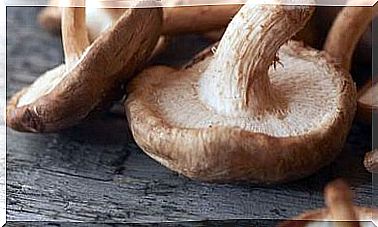The 9 Unsustainable Kitchen Mistakes And How To Avoid Them
The kitchen is probably the place in your home where you can make the most mistakes that harm the environment. We teach you to identify and remedy them.

If you want your behavior to be sustainable, you have to take care of everything you do in the kitchen. Errors in this space can increase the amount of the bills and cause an unnecessary environmental impact.
The big environmental mistakes in the kitchen
1. Wasting food
According to various estimates , only half of all food produced ends up in the stomachs, the rest ends up in the garbage.
We should not continue to participate in this unprecedented waste. We can all do something to reduce food waste, at least within our own four walls.
- To avoid wasting food, you should always shop according to a plan and only buy what you can use.
- Rather than just throwing out things that are past the best-before date (not the same as the use-by date), trust your senses, as many foods can be eaten longer.
- Even a withered carrot, slightly wilted cabbage, or hard buns shouldn’t go to the trash, but to the saucepan.
- The proper storage of food is particularly important. Products such as potatoes, cereals and muesli should be stored in a cool, dark and dry place; Most other “dry” foods should be stored at least in a cool, well-sealed place, and there are many foods that do not need to be kept in the refrigerator.
2. Wasting energy
You can save energy in the kitchen, as in the whole house, for one thing, by making sure you buy the most energy efficient appliances possible. On the other hand, you have to use them correctly.
- Anyone who runs the dishwasher half empty or who rins the dishes in hot water (just remove solid debris) wastes an unnecessary amount of energy, water and money.
- You can also save energy by making sure the pot is the same size as the cooktop or stove where it cooks. If the plate is much larger, a lot of energy is lost.
- You don’t need to preheat the oven to make most recipes. Only soufflés and other delicate preparations really need it.
- You don’t need to turn on the extractor hood for every pasta pot (at least if your kitchen has a window). Ventilation is usually sufficient.
- The refrigerator and freezer compartments should never be overfilled or completely emptied, since in both cases electricity consumption multiplies (it is always better to be full rather than empty).
3. Buy cheap utensils
You can buy plastic spoons, containers, and other utensils for a few dollars at discount stores and large chains. But generally , you’re not doing yourself or the environment a favor by going for cheap products.
- Plastic parts can be unhealthy because they release harmful chemicals into food.
- Cheap, plastic utensils rarely last long and therefore contribute to wasted resources.
- Poor quality pots can also waste energy because they do not seat properly on burners or on induction or ceramic hobs.
- Cheap kettles or toasters use up a lot of electricity unnecessarily.
You don’t always have to buy the most expensive, but putting a little emphasis on quality pays off for your health, the environment, and ultimately your wallet as well.
As a general rule, wooden, stainless steel, iron, ceramic and glass utensils are preferable.
4. Clean with toxic cleaning agents
Advertising tells us that everything in the kitchen has to be “hygienically” clean, but many cleaners abuse toxic and polluting detergent ingredients.
For example, the use of antibacterial agents (such as triclosan) could promote the growth of bacteria resistant to antibiotics.
The conventional oven sprays, abrasive cleaners, cleaners, dishwasher tablets … are also harmful to health and the environment by the type of surfactants, fragrances, bleaches and preservatives containing.
The best alternatives are certified organic cleaning products and homemade cleaning preparations.
5. Produce mountains of garbage
If you look around you, you will find that you can save a lot of food packaging, which is the main ingredient in garbage.
- Vegetables and fruits, for example, do not have to be sealed with plastic, as do packaged cheese, bagged salad, individually packaged mini-portions, and plastic vegetable bags.
- If you have the opportunity, go shopping at the weekly market and take everything in your own containers and shopping bags.
- Ultra-processed food products are not only bad for your health, but also produce a lot of waste, cooking fresh is better for you and the environment.
- And finally, if you always separate glass, paper, plastic and organic waste and dispose of it in the right places, you will help reduce the amount of waste that is incinerated and promote recycling.
- Put organic waste in 100% compostable bags, because eliminating other types of bags is a great expense for recycling plants.
6. Do not buy appliances that consume a lot of energy
You shouldn’t buy new appliances because ours is outdated (repairing an appliance is more sustainable than throwing it out), but when it comes time to replace your stove, refrigerator, or dishwasher , be sure to choose a model that is highly energy efficient. .
You can find the energy efficiency class on all appliances. Surely you have ever thought that the differences between A, A + and A ++ were not clear, that is why the European Union has decided to establish a scale from A to G that came into force last March.
Currently no device reaches the A rating (and there are no longer “pluses”), which is reserved for models that may appear in the future with better qualities, so that the most efficient current device can show a B. These models they are more expensive but the difference in price pays for itself with the lower energy consumption.
7. Wrap the food in aluminum foil and cling film
Many people prefer to wrap leftovers, sandwiches, and cut fruits and vegetables in cling film or aluminum foil. Both are harmful to the environment and potentially harmful to health.
- Plastic is based on petroleum and can release chemicals that are harmful to your health.
- Aluminum requires a great deal of energy to manufacture.
To preserve food simply place it on plates or in glass tins and jars.
8. Eat prepared meals
Even the best equipped kitchen is useless if you don’t cook in it. People who eat prepared meals ingest many additives, some of which are questionable.
Prepared meals also generate more waste than the same amount of food bought from the market and prepared at home, because they are almost always packaged in relatively small portions with plastic, aluminum or polystyrene.
9. Stack kitchen utensils
Blender, mincer, food processor, hot air fryer, yogurt maker, ice cream maker, waffle iron, bread maker, sandwich toaster, rice cooker, automatic dehydrator, egg cooker, tabletop grill … the list of devices With which you can equip your kitchen is endless, and most of them are unnecessary or you don’t end up using them, but their manufacture has meant the consumption of natural resources and then they occupy a precious space.









